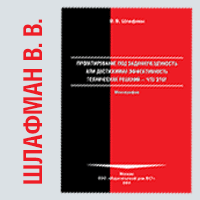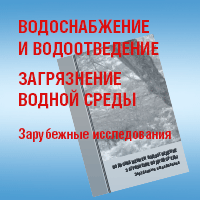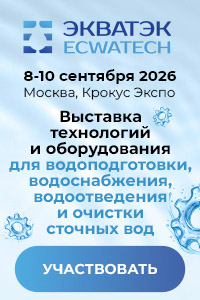№6|2019
ABROAD
bbk 000000
UDC 628.1/.2 (98)
Water supply and wastewater disposal in the Arctic region:
Greenland, Canada, USA (a review)
Summary
The specific features of the water supply and sanitation infrastructure in the Arctic Region are determined by the extreme dramatically changing climatic conditions, scattering throughout the vast territory of separate communities; the lack, with a few exceptions, of road communication between settlements; differences in the views of traditional and modern culture on the role of water supply and sanitation systems. The transport infrastructure involves the prevailing use of ships, aircraft and helicopters. In light of this almost all communities have autonomous systems of power supply, water supply and sanitation. Public water supply is provided only in some of the largest cities; in most cases, the water transported in tanks is stored by residents in tanks or independently delivered from water distribution points. Wastewater is either discharged untreated or passes passive purification under natural conditions organized in stabilization ponds and/or in marshy areas where self-purfication takes place due to sedimentation, biodegradation and inactivation of microorganisms under the impact of sunlight. After passive treatment the effluent is discharged into estuaries or the sea. In households of small settlements bio toilets with removable plastic bags are widely used. These bags are collected, transported and emptied at sea by municipal services, outsourcing companies or individual collectors. Recently local wastewater treatment and reuse systems have become common; monitoring of anthropogenic pollution of the natural aquatic environment is becoming regular.
Key words
water supply , anthropogenic pollution , aquatic environment , the Arctic Region , Greenland , Canadian Arctic , Alaska
The further text is accessible on a paid subscription.
For authorisation enter the login/password.
Or subscribe
REFERENCES
- Hendriksen K., Hoffmann B. Greenlandic water and sanitation systems – identifying system constellation and challenges. Environmental Science and Pollution Research, 2018, v. 25, no. 33, рр. 32964–32974.
- Daley K., Truelstrup H. L., Jamieson R. C., et al. Chemical and microbial characteristics of municipal drinking water supply systems in the Canadian Arctic. Environmental Science and Pollution Research, 2018, v. 25, no. 33, рр. 32926–32937.
- Daley K., Jamieson R., Rainham D., Truelstrup H. L. Wastewater treatment and public health in Nunavut: a microbial risk assessment framework for the Canadian Arctic. Еnvironmental Science and Pollution Research, 2018, v. 25, no. 33, рр. 32860–32872.
- Gunnarsdottir R., Mueller K., Jenssen P. E. Effect of long-term freezing and freeze-thaw cycles on indigenous and inoculated microorganism in dewatered blackwater. Environmental Science and Technology, 2012, v. 46, no. 22, рр. 12408–12416.
- Thomas M. K., Murray R., Flockhart L., et al. Estimates of the burden of foodborne illness in Canada for 30 specified pathogens and unspecified agents, circa 2006. Foodborne Pathogen Diseases, 2013, v. 10, no. 7, рр. 639–651.
- Krumhansl K., Krkosek W., Greenwood M., et al. Assessment of Arctic community wastewater impacts on marine benthic invertebrates. Environmental Science and Technology, 2015, v. 49, no. 2, рр. 760–766.
- Wu T., Engelhardt J. D., Guo T., et al. Applicability of energy-positive net-zero water management in Alaska: technology status and case study. Environmental Science and Pollution Research, 2018, v. 25, no. 33, рр. 33025–33037.
- Hickel K. A., Dotson A., Thomas T. K., et al. The search for an alternative to piped water and sewer systems in the Alaskan Arctic. Environmental Science and Pollution Research, 2018, v. 25, no. 33, рр. 32873–32880.
- Kallenborn R., Brorstrom-Lunden E., Reiersen L.-O., Wilson S. Pharmaceuticals and personal care products (PPCPs) in Arctic environments: indicator contaminants for assessing local and remote anthropogenic sources in a pristine ecosystems. Environmental Science and Pollution Research, 2018, v. 25, no. 33, рр. 33001–33013.
- Bergheim M., Helland T., Kallenborn R., Kummerer K. Benzylpenicillin (penicillin G) transformation in aqueous solution at low temperature under controlled laboratory conditions. Chemosphere, 2010, v. 81, pp. 1477–1485.






